Navigating the Future of Fast TV: Insights for Entrepreneurs
Explore the Thriving Fast TV Landscape: Insights and Inspiration for Entrepreneurs - Join Mike Parsons as he delves into the dynamic world of Fast TV, where streaming and traditional TV intersect, and discover valuable insights from success stories to guide aspiring entrepreneurs.

In an era where streaming and traditional TV converge, the Fast TV channel industry stands out as a burgeoning field ripe with opportunities. Entrepreneurs venturing into this space can draw inspiration and guidance from existing success stories. Let's delve into critical facets of Fast TV, each illuminated by a notable example, offering insights for aspiring entrepreneurs.
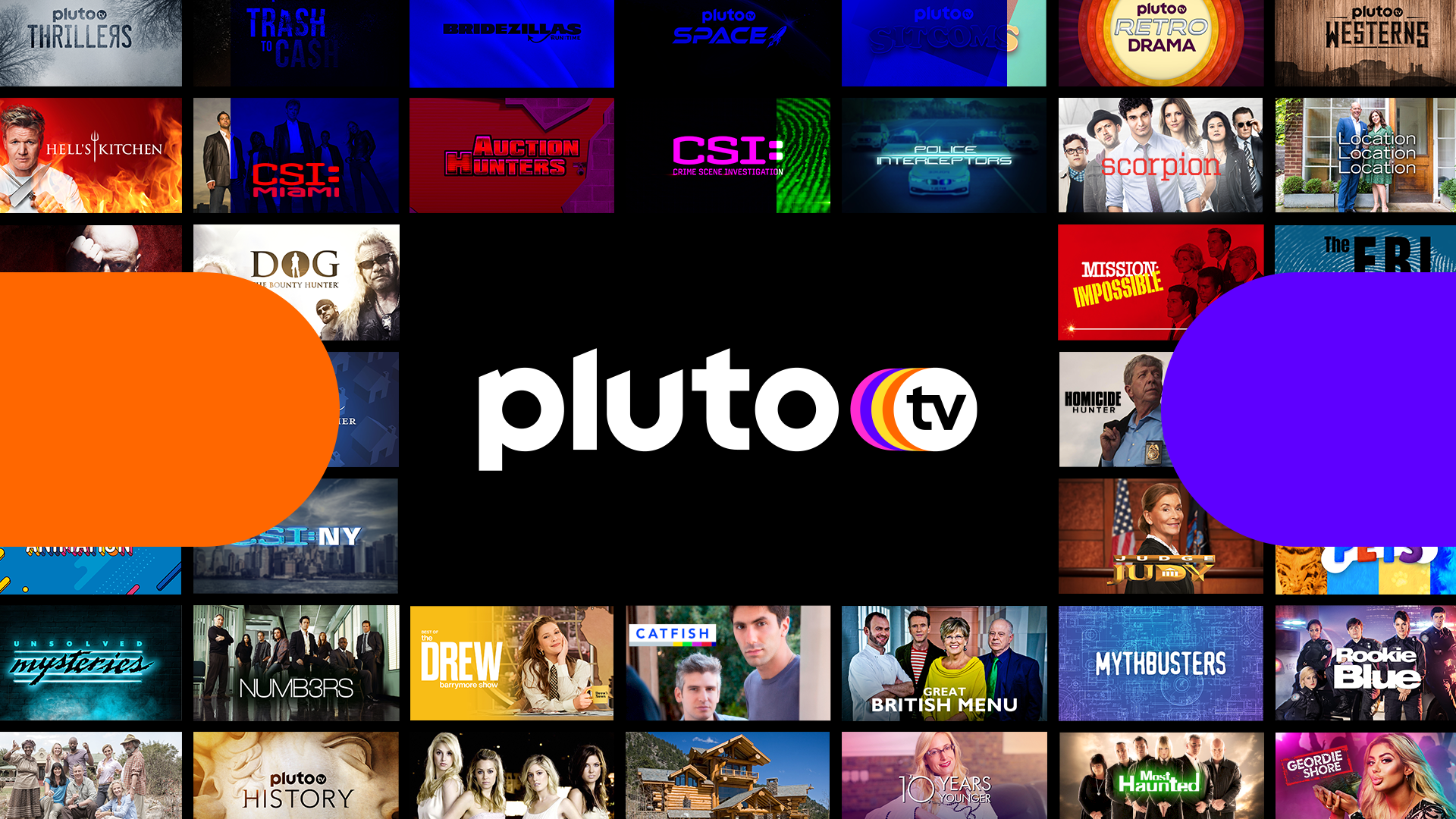
What is Fast TV? – The Pluto TV Paradigm
Fast TV combines the convenience of streaming with the linear format of traditional TV, all ad-supported and free. Pluto TV, a pioneer in this domain, exemplifies how diverse content and an easy-to-navigate interface can attract a vast audience without subscription fees.
Here's a list of ten notable Fast TV channels that were prominent in the market at that time:
- Pluto TV: Owned by ViacomCBS, Pluto TV is one of the most popular Fast TV services, offering a wide range of free channels, including movies, sports, news, and entertainment.
- Tubi: Acquired by Fox Corporation, Tubi provides a vast library of on-demand movies and TV shows and a selection of live-streaming channels.
- Roku Channel: Created by Roku Inc., the Roku Channel offers a mix of free and premium video content and has been expanding its library with a range of genres and original programming.
- IMDb TV: Owned by Amazon, IMDb TV (which might have been rebranded to Amazon Freevee) offers a collection of movies and TV shows for free, including original productions.
- Crackle: Crackle, owned by Chicken Soup for the Soul Entertainment, features a variety of movies and TV shows, along with original content, available for free.
- Xumo: Operated by Comcast, Xumo offers live and on-demand entertainment, news, and sports content across various channels.
- Peacock: NBCUniversal's Peacock includes a free tier that offers a variety of TV shows, movies, sports, and some original series.
- Redbox Free Live TV: Known for its DVD rental kiosks, Redbox also offers a Fast TV service with various channels spanning different genres.
- Sling Free: From Dish Network, Sling Free offers a selection of free TV shows and movies, along with some live channels.
- Plex Live TV: Plex started as a media server software but has branched into offering free live TV channels, including news, sports, and entertainment.
The Evolution of Fast TV – Roku's Rise
Emerging as an alternative to cable, Fast TV has grown through high-speed internet and an appetite for streaming. Roku, initially a streaming device maker, capitalized on this shift by launching its Fast TV service, Roku Channel, showcasing the industry's evolution.
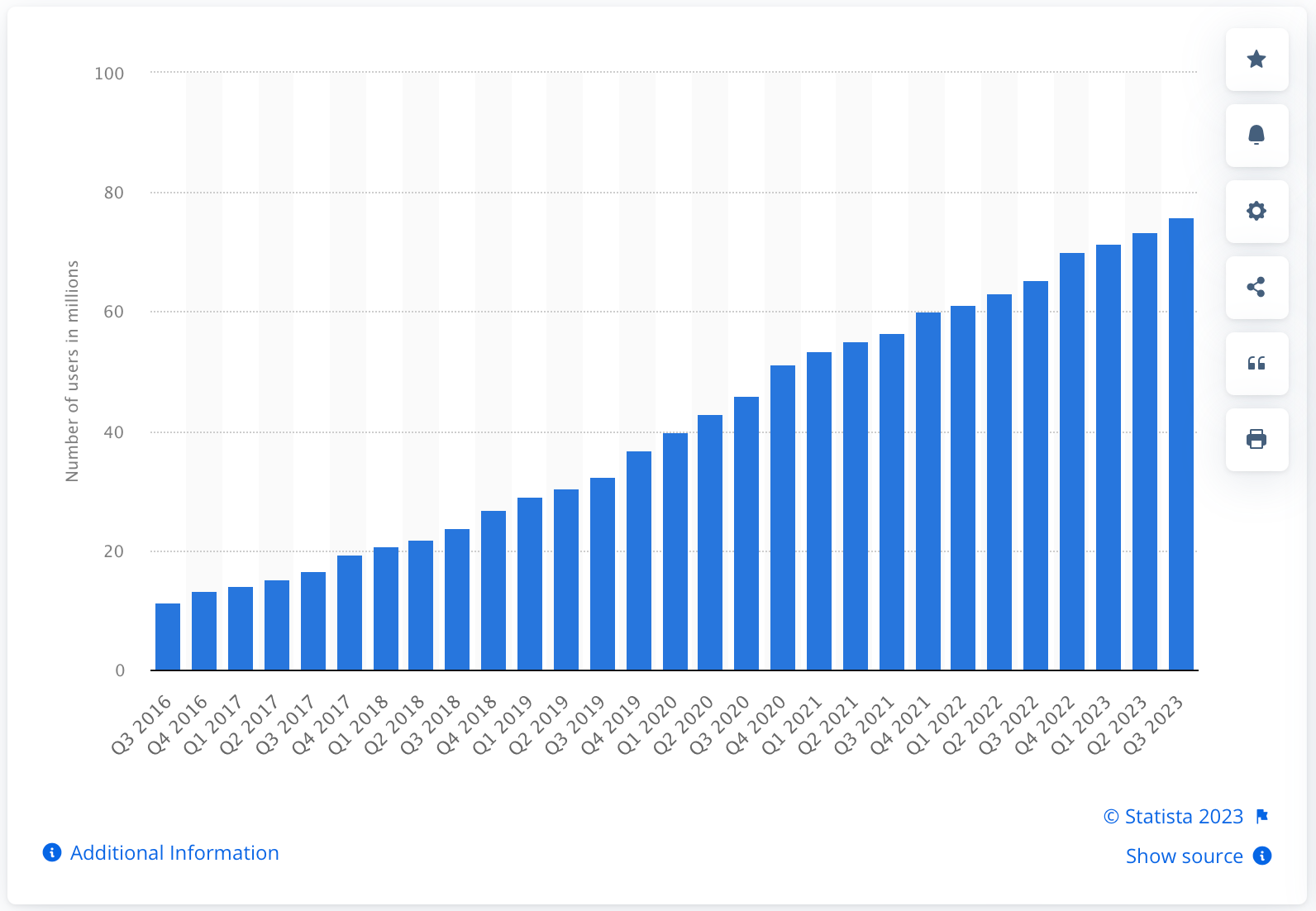
Let's delve deeper into these numbers:
- Growth in Active Accounts: In January 2023, Roku Inc. reported surpassing 70 million global active accounts. This number represents a significant year-over-year increase compared to its 60.1 million active accounts in the fourth quarter of 2021. This growth of nearly 10 million active accounts in about a year highlights the platform's rapidly expanding user base.
- Contextualizing the Growth: The increase from 60.1 million to over 70 million active accounts in a relatively short span underscores Roku's appeal as a streaming platform and the broader trend of consumers gravitating towards streaming services. This trend reflects the changing media consumption habits, with more viewers opting for the convenience, variety, and accessibility of streaming platforms.
- Comparative Growth Rate: The addition of nearly 10 million active accounts in a year can be seen as a continuation of Roku's growth trend. Previously, the platform had seen even more dramatic increases in its user base, driven by various factors such as the expansion of its content library, strategic partnerships, and the overall increase in demand for streaming services, particularly in the context of the global changes in entertainment consumption patterns.
- Impact of Growing User Base: The increase in active accounts is not just a metric of popularity but also plays a crucial role in Roku's business model, which includes advertising revenue and partnerships with content creators. A more extensive user base translates into more substantial viewership numbers, making the platform more attractive to advertisers and content providers.
- Significance for the Industry: Roku's growth is significant within the Fast TV and broader streaming market. It highlights the potential for other platforms in this space and sets a benchmark for success. Roku's expansion indicates the vast potential in the ad-supported streaming sector, where consumers increasingly prefer free or low-cost options.
Overall, Roku's increased active accounts are a testament to its successful strategy and adaptability in the fast-evolving streaming industry. It demonstrates Roku's growing prominence and points to broader shifts in how audiences consume entertainment, offering valuable insights for entrepreneurs and businesses in the digital media space.
Mastering the Business Model – Hulu's Hybrid Approach
While Fast TV typically relies on ad revenue, some, like Hulu, have adopted a hybrid model offering ad-supported and subscription options. This approach demonstrates the flexibility of Fast TV business models in adapting to viewer preferences.
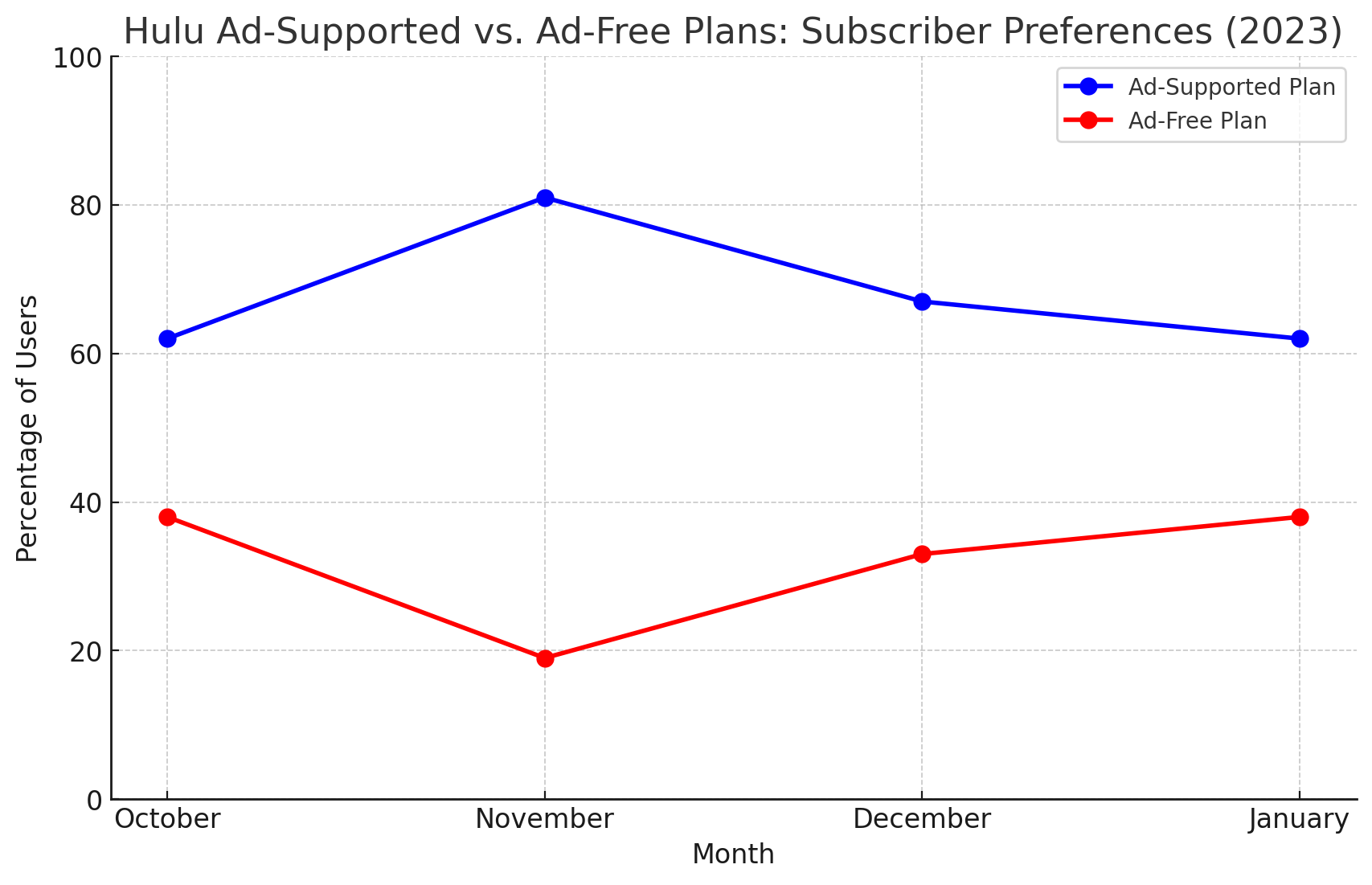
Crafting a Winning Content Strategy – Netflix's Niche Appeal
A robust content strategy is crucial. Though a subscription service, Netflix illustrates the power of offering both popular and niche content, a strategy equally relevant for Fast TV channels seeking to capture diverse audiences.
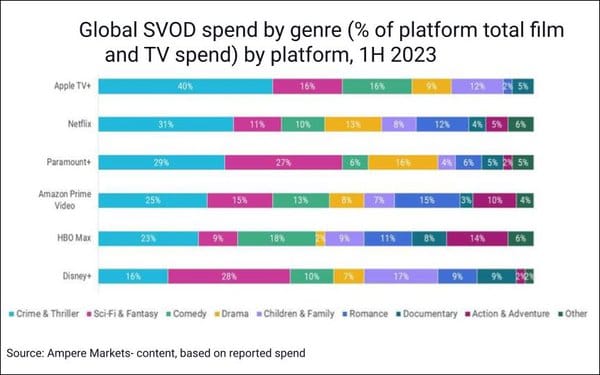
For Netflix, the genre spending breakdown is as follows:
- Crime & Thriller: 20%
- Sci-Fi & Fantasy: 11%
- Comedy: 16%
- Drama: 27%
- Children & Family: 1%
- Romance: 3%
- Documentary: 6%
- Action & Adventure: 12%
- Other: 4%
Targeting the Right Audience – YouTube TV's Broad Base
Fast TV appeals to a wide demographic. With its extensive range of channels, YouTube TV targets everyone from millennials to baby boomers, showing the importance of understanding and catering to varied viewer preferences.
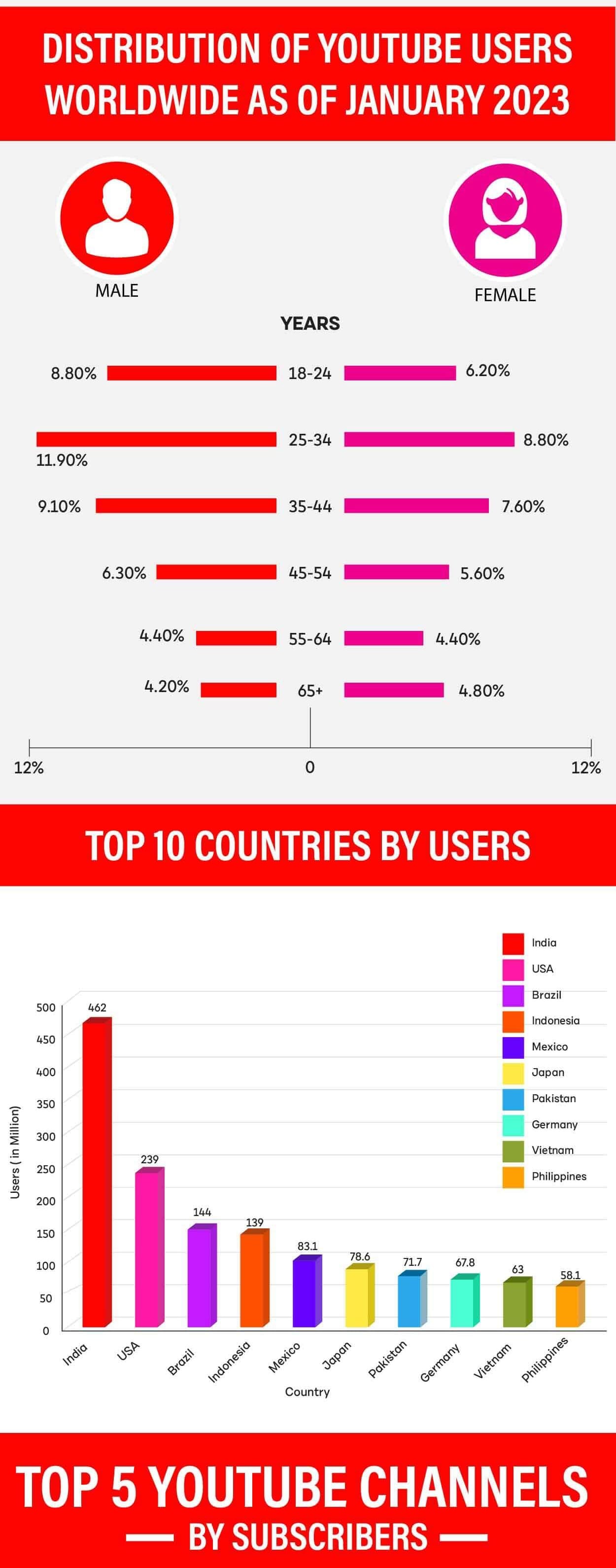
Leveraging Technology and Distribution – Amazon Prime Video's Accessibility
Successful Fast TV hinges on technology and accessibility. Amazon Prime Video, available on numerous devices, highlights the necessity of a seamless, cross-platform viewing experience for audience retention.
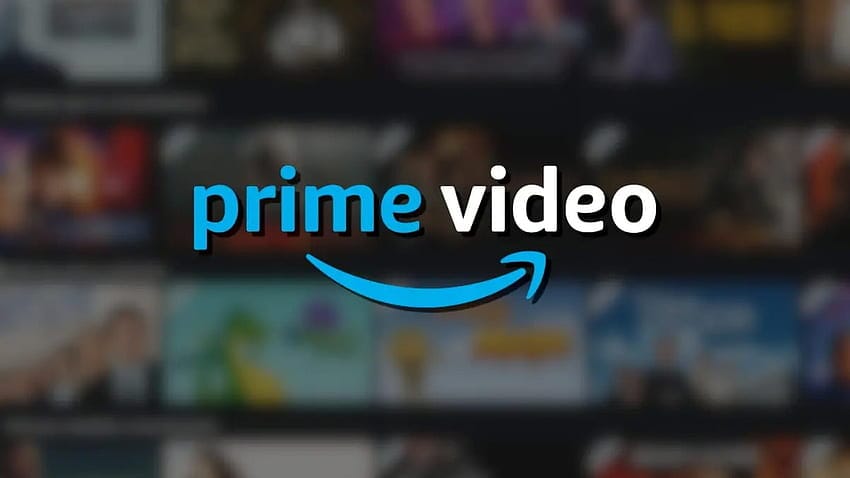
Amazon Prime Video offers a user-friendly profile creation and management system that is accessible across a multitude of platforms, ensuring that users can enjoy a personalized viewing experience regardless of how they access the service. Here's an expanded overview of where and how users can manage their Prime Video profiles:
- Mobile Devices:
- Android: Users with Android devices can download the Prime Video app from the Google Play Store, allowing them to create and manage profiles directly on their smartphones or tablets.
- iOS: Similarly, iPhone and iPad users can utilize the Prime Video app available on the Apple App Store to handle their profiles on the go.
- Prime Video Website:
- Accessible via web browsers on computers, the Prime Video website offers full functionality for profile management, including the ability to create new profiles and customize existing ones.
- Amazon Fire TV:
- As an Amazon product, Fire TV provides a seamless experience for Prime Video users. The Prime Video app on Fire TV devices includes comprehensive profile management tools.
- Gaming Consoles:
- PlayStation 4 & 5: Sony's gaming consoles offer top-tier gaming experiences and support entertainment apps like Prime Video, where users can manage their viewing profiles.
- Xbox One & Xbox Series X/S: Microsoft's gaming consoles also support the Prime Video app, allowing gamers and entertainment enthusiasts to create and customize their Prime Video profiles.
- Streaming Devices and Smart TVs:
- Roku: This popular streaming device supports the Prime Video app, making it easy for users to switch between profiles when streaming their favorite content.
- Smart TVs: Many smart TVs, including those from Samsung, Sony, and LG, come with the Prime Video app pre-installed or available for download, offering integrated profile management features.
Navigating Regulations and Compliance – BBC iPlayer's Adherence.
Operating a Fast TV service requires compliance with broadcasting and advertising regulations. BBC iPlayer, with its strict Adherence to UK broadcasting standards, serves as a prime example of regulatory compliance.

In the UK, broadcasting standards are governed by the Office of Communications (Ofcom) and include rules broadcasters must follow. For the BBC iPlayer, which is a streaming service offered by the British Broadcasting Corporation (BBC), these standards include:
- Content Standards: The content must adhere to Ofcom's Broadcasting Code, which includes rules on harm and offense, accuracy, privacy, and protecting children from unsuitable content.
- Accessibility: The BBC must provide a certain level of programming with subtitles, audio descriptions, and sign language to ensure it is accessible to people with disabilities.
- Fairness and Privacy: BBC iPlayer must respect fairness and privacy by the Broadcasting Code.
- Advertising: As the BBC is publicly funded by license fees, its services, including BBC iPlayer, do not carry commercial advertising.
- Age Ratings: The BBC iPlayer ensures that content is appropriately rated for its audience, with measures to prevent children from accessing adult content.
- Complaints Handling: The BBC must have a clear and effective procedure for handling viewer complaints.
- Impartiality and Editorial Integrity: Content must be delivered with due impartiality, without undue influence on editorial decisions.
- Quotas for Programming: The BBC must meet specific quotas for original UK programming and regional and independent productions.
- Data Protection and Privacy: The service must comply with data protection laws, ensuring that any data collected from viewers is handled legally and ethically.
- Licensing: The BBC operates under a Royal Charter and Agreement that sets out the public purposes of the BBC, and it is also subject to regulation by Ofcom.
The BBC has its own set of detailed editorial guidelines that apply to all content producers. They cover areas such as conflicts of interest, harm and offense, accuracy, and protecting children. These guidelines ensure that all BBC content, including that on iPlayer, meets the highest standards of public service broadcasting.
Innovating in Monetization and Advertising – Peacock TV's Creative Ads
Innovative advertising is vital in Fast TV. With its unique ad formats, Peacock TV demonstrates how creative advertising can be integrated into programming without detracting from the viewer experience.

Peacock TV, NBCUniversal's streaming service, has introduced several unique ad formats to enhance the viewing experience while still delivering value to advertisers. Here is a list of some of the innovative ad formats that Peacock has offered:
- Solo Ads: These are exclusive ad spots where only one advertiser's message is shown during a break, ensuring the viewer's undivided attention.
- Binge Ads: Advertisers can sponsor a viewer's binge-watching session by offering episodes with limited or no commercial interruption after the viewer watches a certain number of episodes.
- Explorer Ads: Utilizing interactivity, these ads allow viewers to engage with the content, such as exploring different products or services within the ad.
- Pause Ads: When a viewer pauses their content, a non-intrusive ad will appear on the screen only during the pause.
- In-Program Experiences: These ads are integrated into the content, such as picture-in-picture or interactive overlays, offering a more seamless viewing experience.
- Shoppable Ads: This format allows viewers to purchase products directly from the ad, often with a QR code that takes the viewer to the product's webpage.
- Trending Ads: Ads are tied to real-time events or trends, potentially connected to social media trends or live broadcasts.
- Prime Pods: Premium ad positions at the beginning of a show or movie, designed to capture the viewer's attention when they are most engaged.
- On-Command Ads: Voice-activated ads that allow viewers to interact with the ad through voice commands, especially in environments where smart speakers or voice remotes are used.
- Branded Channels: Custom channels within Peacock dedicated to specific advertisers showcasing branded content or thematically aligned shows and movies.
Peacock TV's ad formats aim to create a better user experience by being less disruptive and more engaging, which can lead to higher ad effectiveness and viewer satisfaction. These innovative ad formats reflect the evolving advertising landscape in the streaming era, where the balance between monetization and user experience is critical.
Understanding Viewer Engagement and Analytics – Disney+ Insights
Disney+, through its detailed analytics and viewer engagement tracking, Disney+ exemplifies the importance of understanding what captivates audiences, a practice crucial for Fast TV channels to tailor their content and ads effectively.
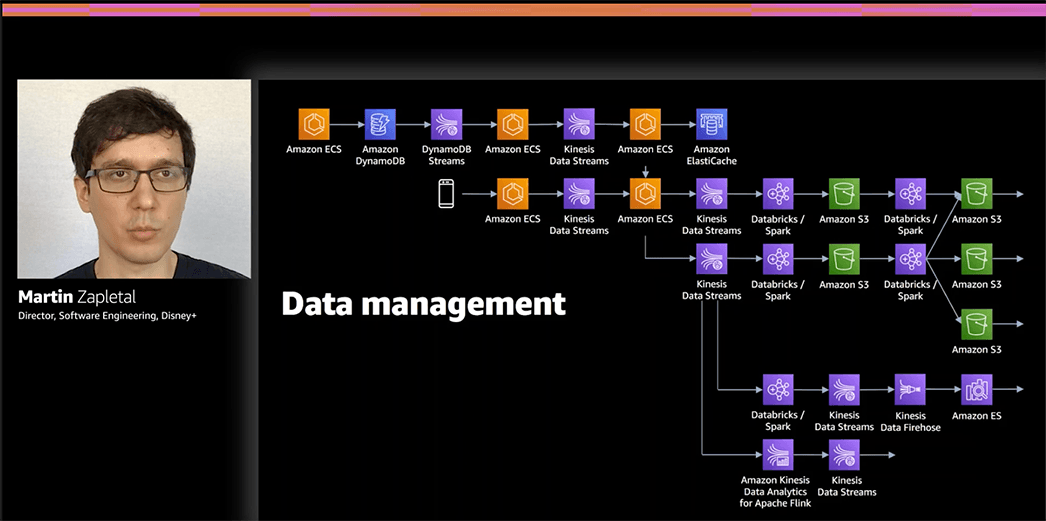
Disney+, as a prominent player in the streaming service market, Disney+ strongly emphasizes using detailed analytics and viewer engagement tracking to tailor the user experience and optimize content offerings. Here's an expanded look into how Disney+ utilizes analytics:
- Viewer Behavior Analysis: Disney+ tracks various viewer behaviors, including what content is watched, how often, and for how long. This helps understand viewer preferences and patterns.
- Content Performance Metrics: Disney+ can gauge the performance of shows and movies on the platform by analyzing view counts, drop-off, and completion rates.
- Personalization and Recommendation Algorithms: Viewer data is used to power recommendation algorithms, ensuring subscribers are presented with content that aligns with their tastes and viewing history.
- Subscriber Retention Strategies: Engagement data helps Disney+ identify factors contributing to retention, enabling them to focus on content and features that keep subscribers returning.
- A/B Testing: Disney+ likely employs A/B testing to optimize user interface designs and functionality, improving the overall user experience based on empirical data.
- Targeted Marketing Campaigns: Viewer analytics allow Disney+ to create targeted marketing campaigns more likely to resonate with specific audience segments.
- Content Development Insights: Analytics can inform content development strategies by highlighting popular genre themes or determining the potential success of proposed series or films.
- Geographic and Demographic Insights: Tracking engagement across different regions and demographics enables Disney+ to tailor its content library to suit cultural and regional preferences.
- Device Usage Patterns: Understanding which devices subscribers use to access the service helps Disney+ optimize its app performance across platforms.
- Subscriber Acquisition Analysis: Disney+ can refine its acquisition strategies and improve onboarding by analyzing how new subscribers interact with the platform.
- User Interface and Experience Optimizations: Engagement data informs interface improvements, making navigation and content discovery more intuitive for users.
- Content Licensing and Renewal Decisions: Analytics help Disney+ decide which third-party content to license, renew, or let go based on popularity and viewership data.
By leveraging these detailed analytics and engagement tracking methodologies, Disney+ can make data-driven decisions that enhance the platform's content strategy, user experience, and business performance. This focus on the use of data underscores the importance of understanding and responding to subscriber behavior in the highly competitive streaming industry.
Staying Ahead of Competition and Market Trends – HBO Max's Strategic Moves
In a competitive landscape, staying ahead requires agility. HBO Max's expansion into Fast TV through curated content and strategic partnerships shows how understanding market trends is vital for success.
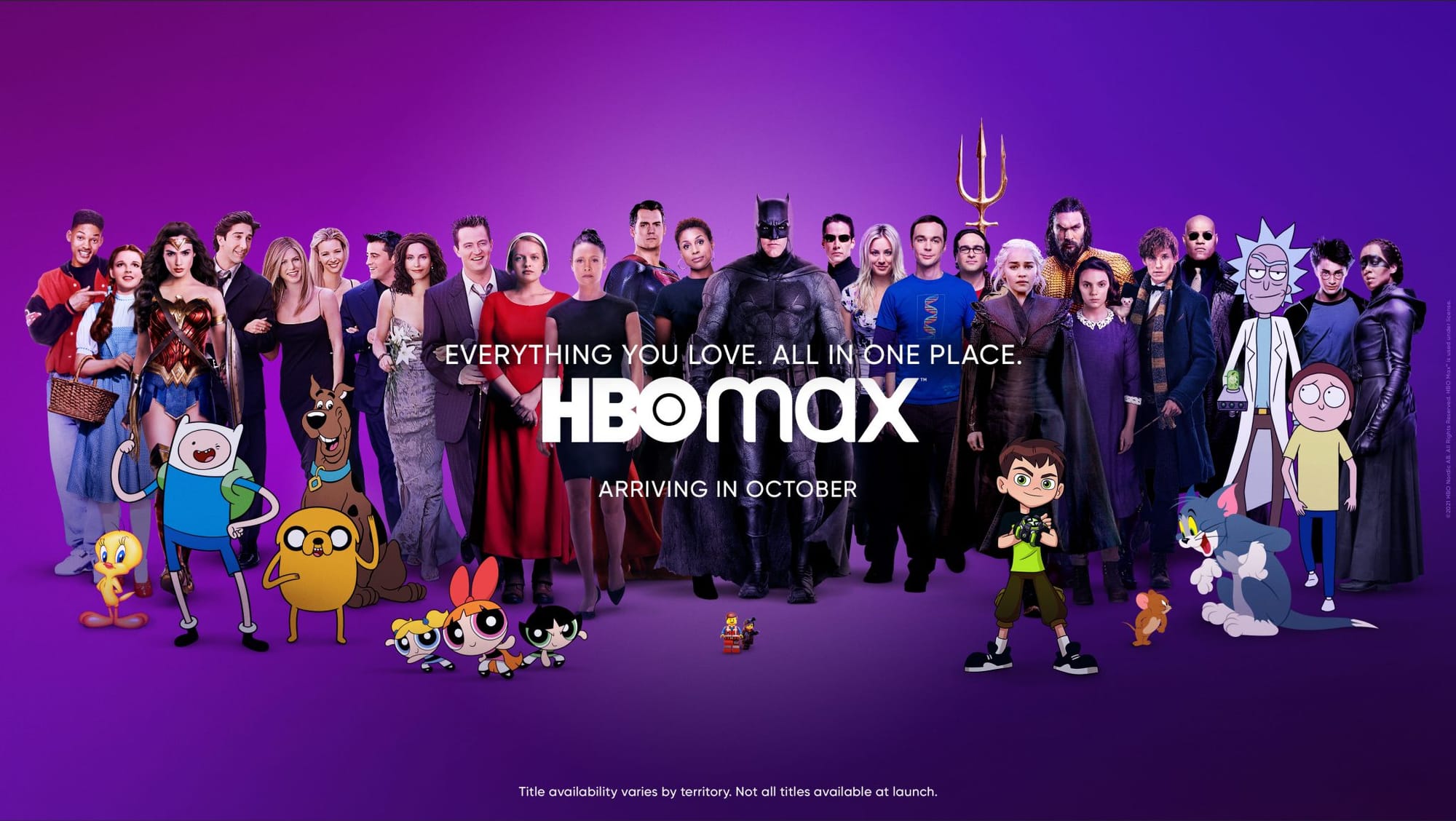
HBO Max's strategic partnerships are a cornerstone of its growth and expansion strategy. These alliances enhance content offerings, extend distribution, and improve technology and user experience. Here's an expanded overview of strategic partnerships, along with examples:
- Cable Providers and Telecom Companies: HBO Max has partnered with cable providers like Comcast and telecom companies such as AT&T to offer HBO Max as part of their bundles or as a free add-on for specific plans. For instance, AT&T customers with premium plans had access to HBO Max at no additional cost.
- Tech Companies: Collaborations with tech giants like Apple, Google, and Amazon have ensured that HBO Max is available on various devices and platforms. For example, at launch, HBO Max was available on Apple devices and integrated with the Apple TV app.
- International Media Services: To penetrate international markets, HBO Max has partnered with local streaming services and broadcasters. For instance, HBO Max has collaborated with Sky in Europe to provide its content to Sky customers and vice versa.
- Content Creators and Production Houses: HBO Max has signed deals with renowned creators and production companies to develop exclusive content for the platform. An example is the partnership with J.J. Abrams's Bad Robot Productions to create original series and films.
- Film Studios: HBO Max has leveraged WarnerMedia's relationship with Warner Bros. to offer same-day premieres of theatrical releases on the streaming platform, as seen with the release of movies like "Dune" and "Wonder Woman 1984" during the pandemic.
- Sports Leagues and Organizations: Recognizing the draw of live sports, HBO Max could potentially explore partnerships with sports leagues to stream live events, though as of my last update, specific deals in this domain have not been publicly announced.
- Advertising Partners: For its ad-supported tier, HBO Max has sought strategic advertising partners to deliver innovative and viewer-friendly ad experiences, maximizing revenue while minimizing viewer disruption.
- E-commerce Platforms: Partnerships with e-commerce platforms can be explored to offer merchandise related to famous HBO Max shows, enhancing the fan experience and creating additional revenue streams.
- Gaming Companies: With the rise of interactive entertainment, collaborations with gaming companies to create game tie-ins for the popular HBO Max series could be a strategy, leveraging the storytelling of HBO with interactive gaming experiences.
Through these diverse partnerships, HBO Max not only broadens its distribution network and enriches its content library but also creates synergistic relationships that support its position as a top contender in the streaming service industry.
Overcoming Challenges, Seizing Opportunities – Tubi TV's Niche Focus
Facing challenges like content differentiation and licensing costs, Tubi TV's focus on niche and diverse content highlights opportunities in untapped markets and the importance of unique content offerings.
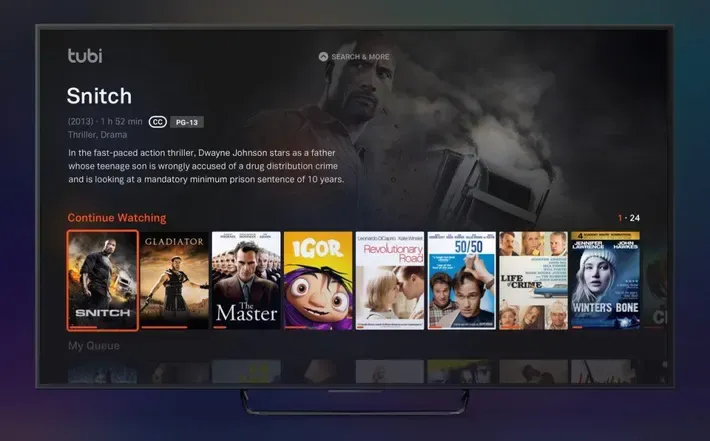
This approach is particularly critical in an environment where differentiation is vital to stand out among numerous competitors. Here's an expanded view of Tubi TV's strategic direction:
- Content Differentiation: Tubi TV distinguishes itself by curating a unique library in a market saturated with similar content offerings. This includes mainstream movies and shows and lesser-known titles that cater to specific interests, such as indie films, classic cinema, and niche genres.
- Licensing Strategy: Tubi TV has approached licensing with a cost-effective model, acquiring content that does not necessarily command the high premiums of the latest blockbusters but still has significant appeal to specific audience segments. This allows Tubi to offer a vast library without prohibitive costs.
- Expanding into Untapped Markets: Recognizing the potential in untapped markets, Tubi TV has expanded its reach to audiences other streaming platforms may underserve. This includes international markets where other services do not adequately provide demand for specific content genres.
- Leveraging Parent Company Assets: As part of Fox Corporation, Tubi TV can leverage cross-promotion and content synergies from its parent company's broad entertainment and news assets, providing a competitive edge in content curation.
- Ad-Supported Revenue Model: Tubi TV's ad-supported model presents an opportunity to attract viewers looking for free streaming options. This model has proven to be an effective way to monetize content without charging subscription fees.
- Data-Driven Content Acquisition: By utilizing viewer data and analytics, Tubi TV can identify content gaps and acquire programming that meets the specific interests of its user base.
- Original Content: Although Tubi initially focused on licensed content, there is an opportunity for the service to begin offering original programming, which could cater to niche interests not covered by more extensive streaming services.
- Partnerships with Indie Creators: Collaborating with independent creators and filmmakers allows Tubi to offer exclusive content that viewers cannot find elsewhere, adding value to its service.
- User Experience Customization: Tubi TV can create a more personalized viewing experience by using data analytics to customize user interfaces and recommendations, tailoring the service to individual viewer tastes.
- Advertising Innovations: By developing less intrusive and more engaging ad formats, Tubi TV can improve the viewer experience while still delivering value to advertisers.
By focusing on these strategies, Tubi TV is positioning itself to capitalize on the demand for diverse and niche content, thus overcoming the challenges of content differentiation and licensing costs prevalent in the streaming industry.
Learning from Success Stories – Apple TV+'s Original Content
Successful Fast TV channels, like Apple TV+, which emphasizes original programming, provide valuable lessons in creating content that stands out and attracting and retaining a dedicated audience.
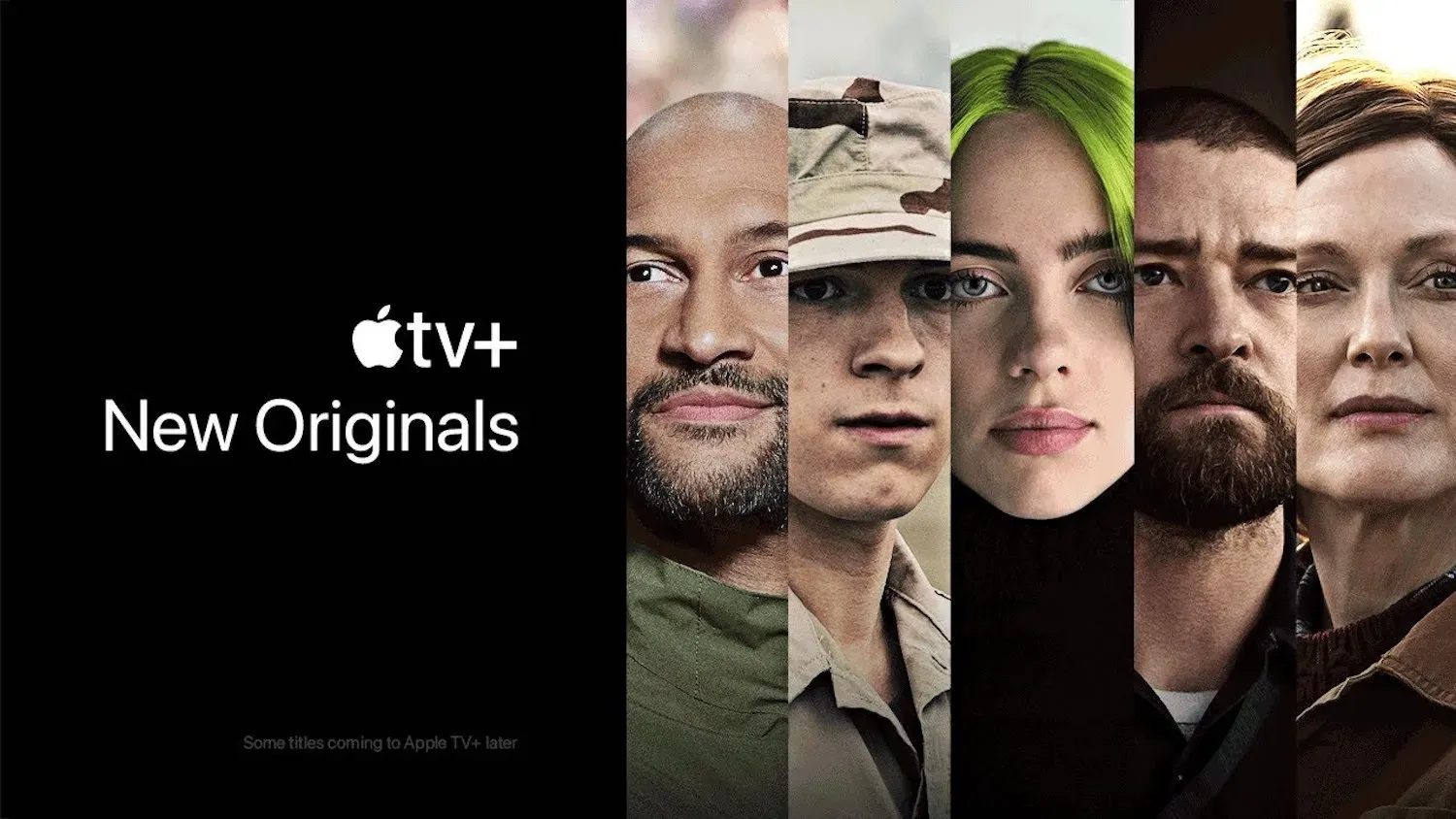
Apple TV+'s emphasis on original programming offers critical lessons for Fast TV channels and any content provider aiming to make an impact in the streaming market. Here's an expanded view with examples of how Apple TV+ has leveraged original content to attract and retain audiences:
- High-Quality Productions: Apple TV+ has invested in high-quality productions focusing on cinematic value and storytelling. For example, "The Morning Show," featuring A-list actors such as Jennifer Aniston and Reese Witherspoon, has received critical acclaim for its production and performances.
- Diverse Genre Offerings: Apple TV+ caters to a wide range of tastes by offering a variety of genres. "Ted Lasso," a heartwarming comedy series, contrasts with the dark and mysterious tone of "Servant," directed by M. Night Shyamalan, showing the platform's range.
- Star Power and Talent: Apple TV+ understands the draw of big names and has collaborated with renowned industry figures to create buzz around its original content. "See," starring Jason Momoa, and "Defending Jacob," featuring Chris Evans, are examples of where star power is used to attract viewers.
- Awards and Recognition: By producing award-winning content, such as "Ted Lasso," which has received multiple Emmy Awards, Apple TV+ elevates its brand and attracts viewers interested in critically acclaimed programming.
- Innovative Storytelling: Apple TV+ pushes the envelope with creative storytelling techniques. "For All Mankind" offers an alternate history of the space race, appealing to fans of both historical drama and science fiction.
- Global and Cultural Stories: With shows like "Tehran" and "Pachinko," Apple TV+ brings global stories to the forefront, appealing to international audiences and those interested in cultural narratives.
- Strategic Release Timing: Apple TV+ often releases its original content strategically around holidays or during award seasons to maximize viewership and relevance.
- Comprehensive Marketing Campaigns: An extensive marketing campaign supports each Apple TV+ original series or film to generate interest and anticipation. The campaigns utilize traditional media, social media, and events to create a buzz.
- Partnerships for Broader Distribution: Apple has partnered with various distributors and platforms to provide free or discounted access to Apple TV+ for a limited time, expanding its potential audience base.
- Commitment to Renewals and Longevity: By renewing successful series early, like "Ted Lasso," Apple TV+ demonstrates a commitment to its content and gives viewers a reason to remain subscribed.
- Documentary and Non-fiction Content: Apple TV+ has also ventured into documentaries and non-fiction content, such as "The Elephant Queen" and "Beastie Boys Story," offering depth and diversity to its library.
By focusing on these strategies, Apple TV+ shows that original content is not just about quantity; it's about crafting memorable, engaging, and high-quality programming that resonates with audiences globally. This focus on original content has helped Apple TV+ carve out its niche in the streaming wars despite being a relative newcomer to the scene.
Preparing for the Future of Fast TV – Paramount+'s AI Integration
The future of Fast TV lies in personalization and technology. Paramount+, with its investment in AI for personalized content, exemplifies the industry's potential direction toward more tailored viewer experiences.

Paramount+'s integration of Artificial Intelligence (AI) into its streaming service is a forward-looking strategy that exemplifies how Fast TV is evolving to provide more personalized content experiences. Here's an expanded view with examples of how Paramount+ is using AI to prepare for the future of streaming:
- Personalized Recommendations: Paramount+ uses AI algorithms to analyze viewing habits and preferences, allowing the service to recommend shows and movies that individual users are likelier to enjoy. For example, if a user frequently watches comedies, the AI might suggest the latest sitcom.
- Content Discovery Features: AI powers advanced search and discovery features on Paramount+, helping users find content through voice commands or predictive text and enhancing the user interface's intuitiveness.
- Viewer Engagement Analysis: By leveraging AI to understand which parts of a show capture the audience's attention, Paramount+ can provide insights to creators, potentially influencing future content production.
- Ad Targeting and Optimization: Paramount+ can use AI to deliver more relevant ads to viewers, improving the ad-supported tier's experience and increasing ad revenue without increasing ad load.
- Content Performance Analytics: AI tools assess content performance on the platform, giving Paramount+ valuable data on what genres or formats to invest in or which series to renew.
- Predictive Modelling: AI can predict trends and viewer preferences, allowing Paramount+ to stay ahead by acquiring or developing content that aligns with anticipated demand.
- User Experience Customization: AI enables Paramount+ to customize the user interface for different audience segments, adapting the layout, navigation, and color scheme to the user's behavior.
- Language and Localization: AI-driven language processing tools provide accurate subtitles and dubbing in multiple languages, making content accessible to a global audience.
- Interactive Content: Paramount+ could develop interactive storytelling experiences, similar to Netflix's "Bandersnatch," using AI to guide the narrative based on viewer choices.
- Quality Control: AI can be used for automated quality control, ensuring that all content streamed on Paramount+ meets technical standards without extensive manual review.
- Customer Support: AI chatbots and virtual assistants can enhance customer support on Paramount+, offering immediate assistance and troubleshooting for users.
- Content Creation Support: AI can assist in script analysis, providing feedback on potential plot points or character development based on data from successful shows.
By integrating AI into various facets of its operation, Paramount+ is positioning itself to offer a highly personalized and efficient streaming experience that caters to the individual preferences of its viewers. This investment in AI highlights the importance of technology in shaping the future of Fast TV and streaming services in general.
Starting Your Fast TV Channel – ViacomCBS's Strategic Expansion
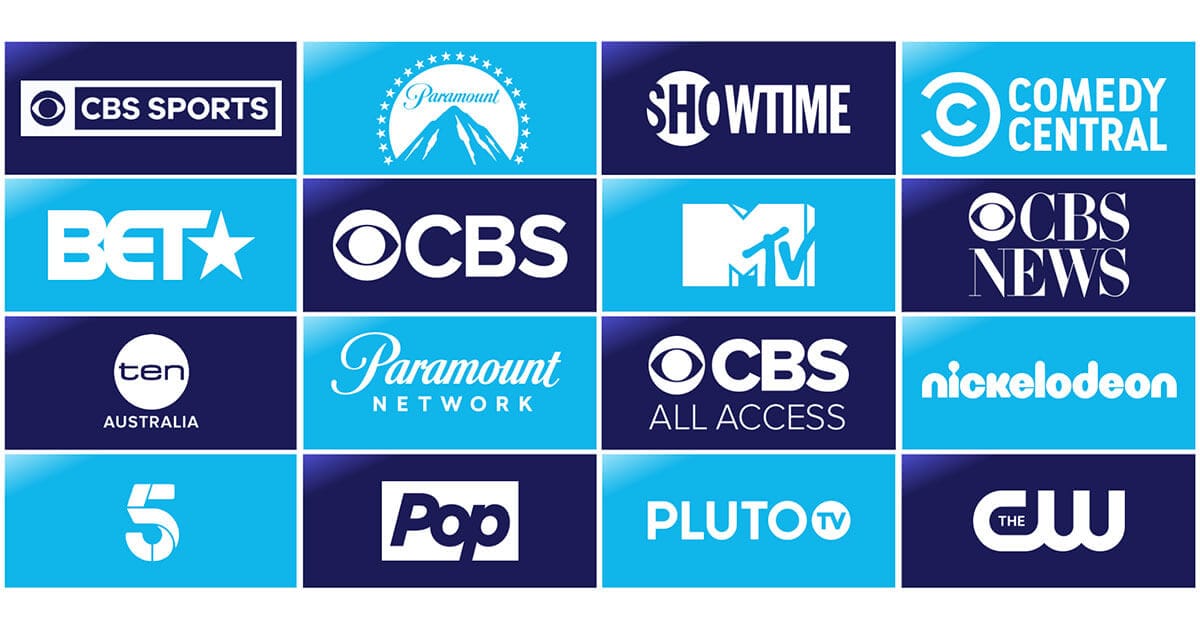
Launching a Fast TV channel, as seen with ViacomCBS's entry into this space, involves significant investment and strategic planning, focusing on content, technology, and advertising. Here, we'll delve into some expanded examples of the critical aspects involved in this strategic expansion:
- Content Development: ViacomCBS's successful entry into the Fast TV channel market underscores the importance of compelling content. This entails producing high-quality shows and movies and securing rights to diverse content. For instance, they may have invested in popular franchises, developed original series, and negotiated licensing agreements for exclusive content, contributing to their channel's appeal.
- Technological Infrastructure: A robust technical infrastructure is essential to deliver a seamless viewing experience to consumers. ViacomCBS likely invested in cutting-edge streaming technology, content delivery networks (CDNs), and data analytics tools. They may have also developed user-friendly apps and interfaces across various devices, ensuring accessibility and convenience for their audience.
- Advertising Strategy: Generating revenue through advertising is vital to a Fast TV channel's success. ViacomCBS would have devised a comprehensive advertising strategy, including ad placement, targeting, and pricing models. They might have explored partnerships with advertisers and agencies to maximize ad revenue while maintaining a positive viewer experience.
- User Engagement and Retention: Retaining viewers and keeping them engaged is an ongoing challenge. ViacomCBS might have implemented strategies like personalized recommendations, interactive features, and social media integration to foster a sense of community among viewers. Engaging content promotion and viewer feedback mechanisms could also be part of their approach.
- Monetization Models: ViacomCBS's strategic expansion would likely encompass various monetization models. These may include subscription-based tiers with exclusive content, ad-supported free tiers, pay-per-view events, merchandise sales tied to their channel's content, and potentially even partnerships with e-commerce platforms for integrated shopping experiences.
- Market Expansion: Expanding into new markets is crucial to ViacomCBS's strategy. This may involve international launches, partnerships with local content providers, or content adaptation to suit regional preferences and languages. Localization efforts can significantly impact a Fast TV channel's global reach and success.
- Competition and Differentiation: ViacomCBS must identify ways to stand out in a crowded marketplace. This could include unique content niches, innovative viewing features, or partnerships with influencers and creators. Staying attuned to consumer trends and emerging technologies is essential for maintaining a competitive edge.
- Data Analytics and Insights: ViacomCBS would rely heavily on data analytics to inform their decisions. They would collect and analyze user behavior, engagement metrics, and demographic information to refine content recommendations, optimize ad targeting, and make data-driven business decisions.
- Regulatory and Legal Compliance: Compliance with regulations related to content distribution, data privacy, and advertising is paramount. ViacomCBS would have a legal and compliance team to navigate the complex landscape of media and entertainment regulations, ensuring they adhere to all relevant laws and guidelines.
- Strategic Partnerships: Collaborations with other media companies, content creators, and technology providers can be instrumental in ViacomCBS's expansion. These partnerships could involve co-productions, content cross-promotion, or technology-sharing agreements to enhance their channel's offerings and reach.
In conclusion, launching a Fast TV channel, exemplified by ViacomCBS's strategic expansion, is a multifaceted endeavor that involves meticulous planning, significant investments, and a continuous commitment to adapt and innovate in response to an ever-evolving media landscape. Success in this space hinges on compelling content, cutting-edge technology, effective monetization strategies, and a deep understanding of consumer preferences and market dynamics.
Embracing International Perspectives – Starz Play's Localization
Understanding regional content preferences and regulatory nuances is crucial. Starz Play's localized content strategy across different regions underlines the importance of international adaptability.
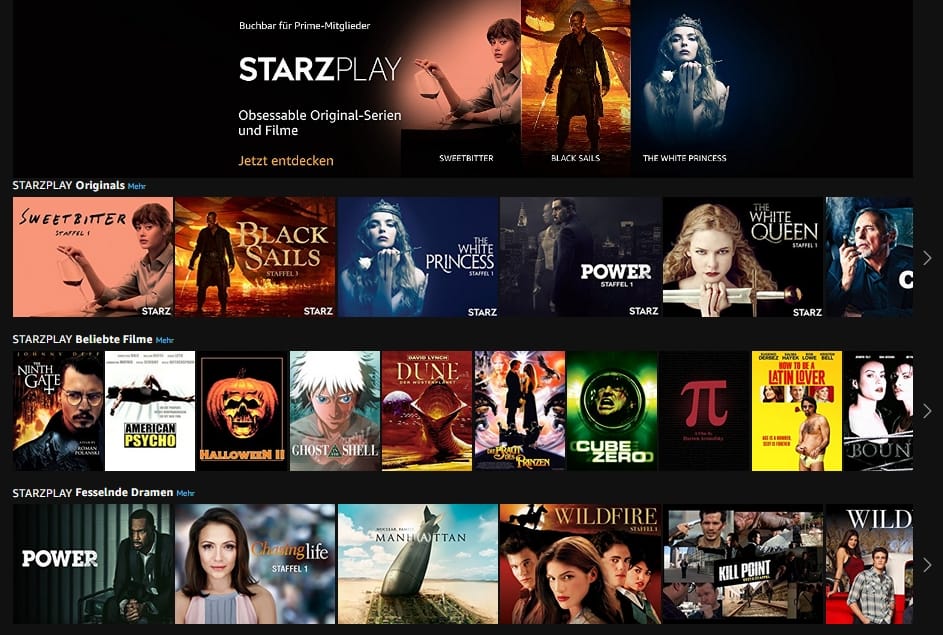
Riding the Wave of Digital Transformation – Sky Go's Digital Shift
Sky Go's transformation into a digital platform illustrates the impact of digital technology in Fast TV, showcasing how embracing digital transformation can enhance content delivery and viewer engagement.
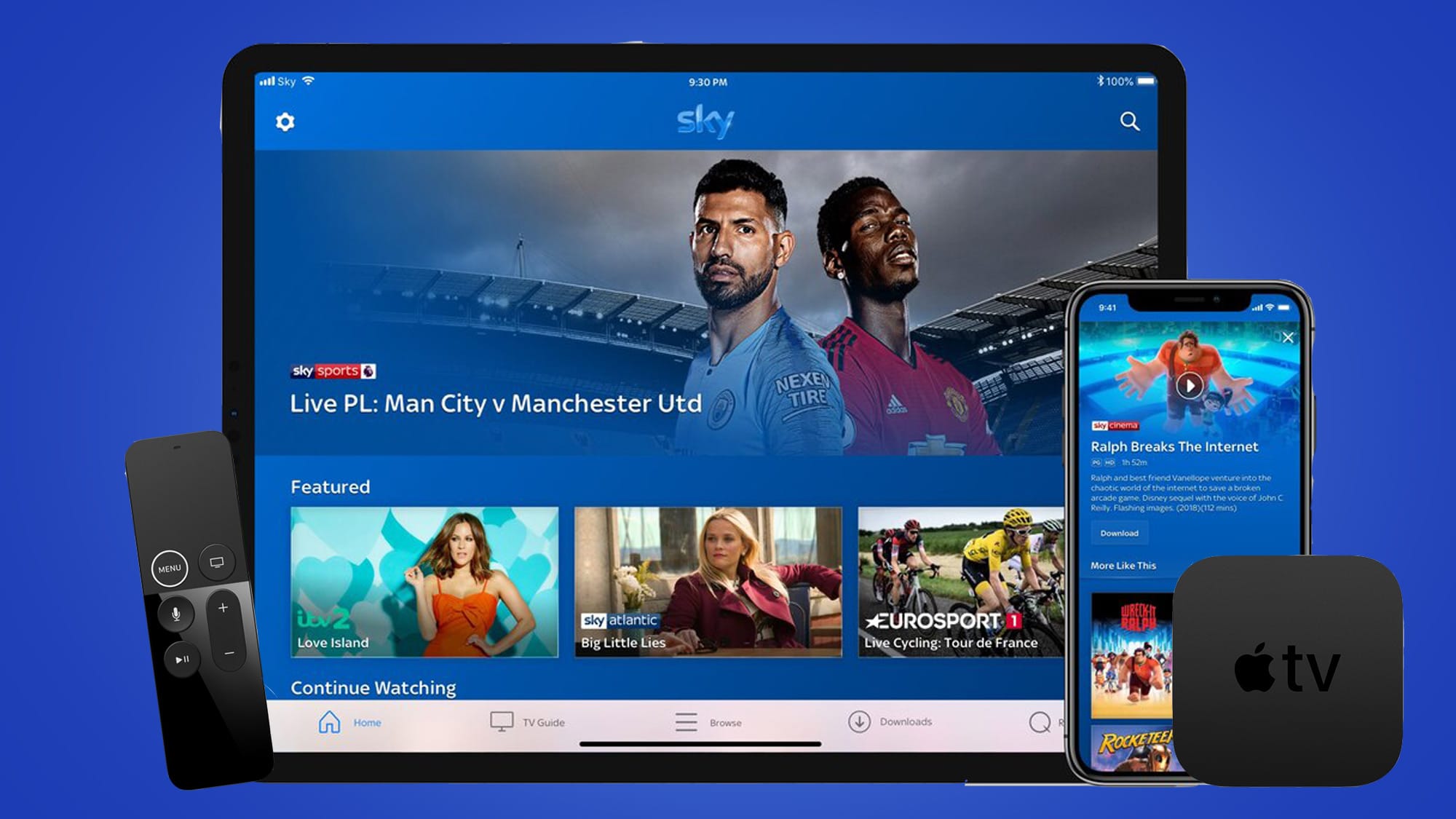
This transformation underscores the industry-wide shift towards digitalization and highlights how embracing digital transformation can revolutionize content delivery and enhance viewer engagement. Let's delve deeper into this transformation, exploring the key aspects and implications:
- Content Accessibility: Sky Go's digital shift has revolutionized content accessibility. Subscribers can now enjoy their favorite shows and movies on-demand, eliminating the need to adhere to rigid broadcast schedules. This freedom and flexibility in content consumption cater to the modern viewer's desire for convenience, making engaging with Sky Go's offerings easier than ever.
- Multi-Device Experience: One of the hallmarks of Sky Go's digital transformation is its multi-device experience. Viewers can seamlessly switch between smartphones, tablets, laptops, smart TVs, and gaming consoles, ensuring that content is available wherever and whenever they want. This adaptability aligns with the diverse ways in which audiences consume media today.
- Personalization and Recommendations: Digital platforms like Sky Go leverage advanced algorithms to provide personalized content recommendations. By analyzing viewing history, preferences, and behavior, they curate content likely to resonate with individual viewers. This enhances the viewer experience and keeps audiences engaged and returning for more.
- Interactive Features: Embracing digital transformation allows Sky Go to incorporate interactive features that enhance viewer engagement. These features can include real-time polls, live chats, interactive quizzes, and second-screen experiences that enable viewers to participate actively in the content they are watching. Such engagement tools foster a sense of community and immersion.
- Analytics and Data Insights: Digital platforms are data-rich environments. Sky Go collects extensive data on viewer behavior, including what content is being watched, when it's being watched, and for how long. This wealth of data provides valuable insights that can inform content acquisition, advertising strategies, and overall platform enhancements.
- On-the-Go Viewing: Sky Go's digital transformation empowers viewers to watch content on the go. Whether during a commute, a lunch break, or while traveling, subscribers can stay connected to their favorite shows and sports events. This convenience aligns with the fast-paced, mobile lifestyles of many modern consumers.
- Content Monetization Models: Digital platforms offer diverse monetization models. Sky can employ subscription-based tiers, pay-per-view options, and even ad-supported free tiers, providing viewers with choices that suit their preferences and budgets. This flexibility in monetization strategies contributes to the platform's sustainability and growth.
- Global Reach: Digital platforms are inherently scalable, enabling Sky Go to extend its reach beyond geographical boundaries. With the proper licensing agreements and content localization efforts, they can attract a global audience, diversify their subscriber base, and enhance their position in the competitive fast TV market.
- Customer Engagement and Support: Digital transformation facilitates improved customer engagement and support. Sky Go can implement real-time customer support through chatbots and online help centers, enhancing the viewer experience and addressing issues promptly. Additionally, they can use social media and email marketing to keep subscribers informed and engaged.
- Adaptation to Market Trends: Digital platforms can quickly adapt to changing market trends and audience preferences. Whether it's the introduction of new content formats, emerging technologies like virtual reality, or shifts in viewer habits, Sky can pivot to meet these evolving demands and stay ahead of the competition.
In conclusion, Sky Go's transformation into a digital platform exemplifies the power of embracing digital technology in the Fast TV industry. This shift enhances content delivery and viewer engagement, positioning Sky Go as a forward-thinking player in an increasingly digital and competitive landscape. It underscores the importance of staying agile, data-driven, and responsive to the evolving needs of modern audiences to remain relevant and thriving in the Fast TV market.
Integrating with Other Media Forms – Sling TV's Multi-Platform Strategy
Sling TV's presence across various platforms demonstrates that successful integration with other media maximizes reach and enhances the overall viewer experience.
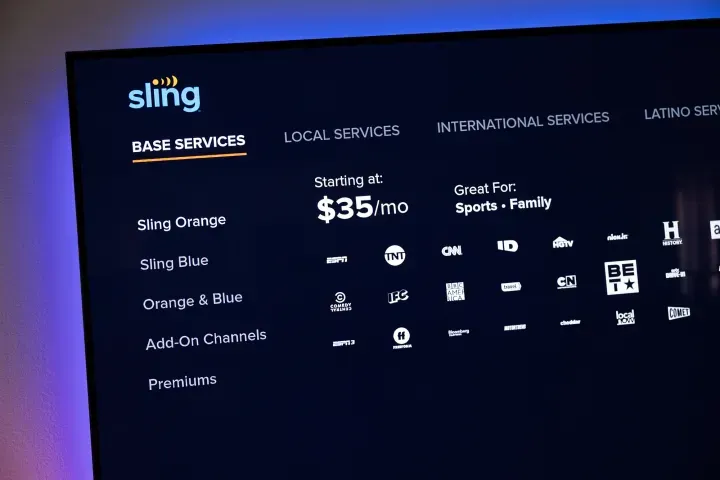
Integrating with Other Media Forms – Sling TV's Multi-Platform Strategy
Sling TV's exemplary multi-platform strategy showcases the importance of effectively integrating with various media forms to maximize reach and enrich the overall viewer experience. Let's delve into an expanded example of how Sling TV has successfully achieved this:
- Cross-Device Accessibility: Sling TV understands that modern viewers consume content on various devices. Their multi-platform approach ensures subscribers can seamlessly access their streaming service on smartphones, tablets, smart TVs, gaming consoles, and desktop computers. This cross-device accessibility allows viewers to watch their favorite shows and movies wherever and whenever they prefer, enhancing user convenience.
- Streaming Apps: Sling TV has developed dedicated apps for different platforms and operating systems. For instance, they offer apps for iOS and Android devices, such as Amazon Fire TV, Roku, Apple TV, and more. Each app is optimized for its platform, providing a smooth and tailored viewing experience. These apps often incorporate unique features and functionalities to make the most of the capabilities of each device.
- Content Compatibility: Sling TV ensures its content is compatible with various media formats and resolutions. They offer high-definition (HD) and 4K streaming options for users with compatible devices and internet connections, delivering an enhanced visual experience. Additionally, they optimize their content for different screen sizes to ensure it looks great on both small smartphone screens and large, high-resolution TVs.
- Cross-Platform Account Integration: Sling TV offers account integration across platforms. This means subscribers can start watching a show on their smart TV and seamlessly continue on their mobile device, picking up where they left off. This promotes user engagement and enhances the overall viewer experience by eliminating interruptions and allowing for flexible viewing.
- Interactive Features: To keep viewers engaged, Sling TV may incorporate interactive features that leverage the unique capabilities of various platforms. For example, they might integrate social media sharing options directly within the app, enabling users to easily share their favorite moments with friends or participate in live chats related to the content they're watching.
- Integration with Social Media: Sling TV recognizes the power of social media in promoting content and engaging audiences. They integrate social sharing features, allowing users to post directly from the app about the shows or movies they watch. Additionally, they may run social media campaigns and partnerships to create buzz and encourage user-generated content related to their shows.
- Platform-Specific Content: Sling TV might collaborate with platform-specific content creators to offer exclusive shows or experiences. For instance, they could partner with YouTube creators for original content or provide early access to certain shows on a particular platform, incentivizing viewers to engage with their service across multiple platforms.
- Customized Advertising: Sling TV's multi-platform strategy extends to advertising as well. They may tailor their advertising approach to each platform, ensuring that ads are relevant to the context and user demographic. This targeted advertising can enhance the viewer experience by presenting relevant and engaging content to users.
- Analytics and User Data: Sling TV leverages data analytics to gain insights into platform viewer behavior. They collect data on which devices are most commonly used, what types of content are prevalent on each platform, and how viewers engage with the service. These insights inform their content acquisition and marketing strategies.
- Customer Support Across Platforms: To provide a consistent and reliable experience, Sling TV offers customer support services accessible on all platforms. Whether a viewer encounters an issue on their smart TV or mobile app, they can reach out for assistance, ensuring a smooth and stress-free user experience.
Sling TV's multi-platform strategy is a testament to the benefits of effectively integrating various media forms. By optimizing content delivery, user experiences, and advertising strategies for each platform, they have successfully expanded their reach, engaged diverse audiences, and created a cohesive and enjoyable streaming experience across devices. This approach fosters viewer loyalty and positions Sling TV as a leader in the competitive streaming market.
Marketing and Promotion Strategies – ESPN+'s Targeted Marketing
Effective marketing is vital for Fast TV channels. ESPN+'s targeted marketing campaigns illustrate the power of understanding and reaching your specific audience segment.
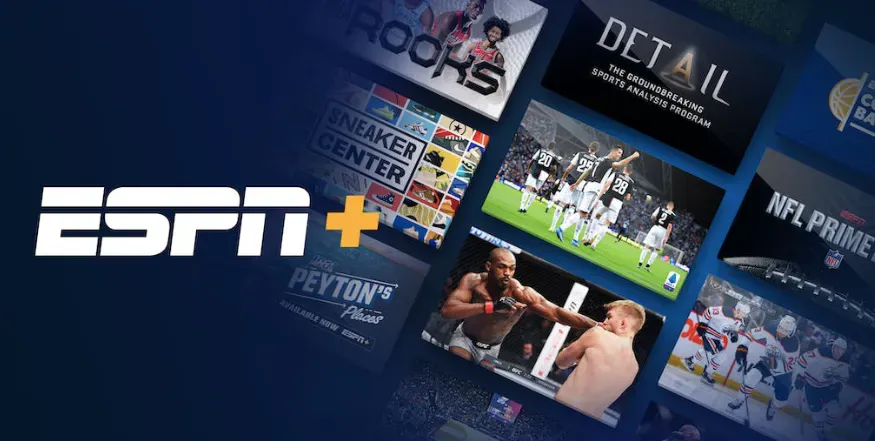
The success of fast TV channels relies heavily on marketing and promotion strategies. ESPN+'s approach to targeted marketing campaigns is an excellent example of how understanding and reaching specific audience segments can be a game-changer in the media industry. Let's explore this concept further with examples:
- Audience Segmentation: ESPN+ employs advanced data analytics and market research to segment its audience effectively. They divide viewers into groups based on sports preferences, demographics, viewing habits, and geographic location. For example, they might identify segments of die-hard football fans, basketball enthusiasts, or MMA aficionados.
- Personalized Content Recommendations: Once audience segments are defined, ESPN+ tailors content recommendations and promotions to match each group's interests. For instance, they might recommend NFL games to football fans, highlight upcoming NBA matches for basketball enthusiasts, or promote UFC events to MMA followers. This personalized approach increases the chances of viewers engaging with content that genuinely appeals to them.
- Customized Advertising: ESPN+ utilizes targeted advertising to optimize ad spend and effectiveness. They partner with advertisers to create ads specifically designed for each audience segment. For instance, a sports equipment brand might run ads featuring football gear during NFL games and basketball equipment during NBA broadcasts. This level of customization enhances ad relevance and engagement.
- Email Marketing and Newsletters: Email marketing is a powerful tool in ESPN+'s arsenal. They send tailored newsletters and updates to subscribers based on their preferences and viewing history. For example, subscribers who frequently watch soccer matches will receive newsletters about upcoming soccer events, player interviews, and exclusive soccer-related content.
- Social Media Engagement: ESPN+ actively engages with its audience on social media platforms. They create content and campaigns that align with the interests of specific audience segments. For instance, they might run social media contests related to major sporting events, encouraging interaction and sharing among fans of those sports.
- Influencer Partnerships: Collaborating with sports influencers and athletes is critical to ESPN+'s marketing strategy. They partner with athletes who resonate with their target audience segments. For example, if they want to attract a younger demographic, they might collaborate with a famous Gen Z athlete for promotional campaigns.
- Event Marketing: ESPN+ leverages major sporting events to reach specific audience segments. For example, during the Olympics, they might focus their marketing efforts on fans of less mainstream sports that gain attention during the Games, such as gymnastics or archery. This ensures they capture the interest of viewers more inclined to watch these events.
- Localized Campaigns: Recognizing the global appeal of sports, ESPN+ runs localized marketing campaigns to target audiences in different regions. They may promote cricket events in India, soccer matches in Europe, and baseball games in the United States, tailoring their content and promotions to match the sports preferences of each region.
- Content Partnerships: ESPN+ partners with sports leagues and organizations to access exclusive content. These partnerships allow them to offer unique and compelling content that appeals directly to specific audience segments. For example, they might secure exclusive rights to stream college football games, attracting a dedicated fanbase.
- Analyzing Campaign Effectiveness: To refine its marketing strategies, ESPN+ continuously monitors the effectiveness of its campaigns. They track key metrics like click-through rates, conversion rates, and viewer engagement to gauge the success of their efforts. Based on this data, they make further adjustments to optimize their targeting and messaging.
In summary, ESPN+'s targeted marketing campaigns demonstrate the power of understanding and engaging specific audience segments within the Fast TV channel landscape. By tailoring content recommendations, advertisements, and promotions to match the preferences and interests of each segment, they not only attract and retain subscribers but drive higher engagement and revenue. This level of precision in marketing sets ESPN+ apart as a competitive sports streaming market leader.
For entrepreneurs, the Fast TV industry offers a landscape rich with potential. Drawing inspiration from these industry leaders can pave the way for innovative, successful ventures. Embrace the challenge with creativity and strategic foresight, and you could redefine the future of entertainment.

